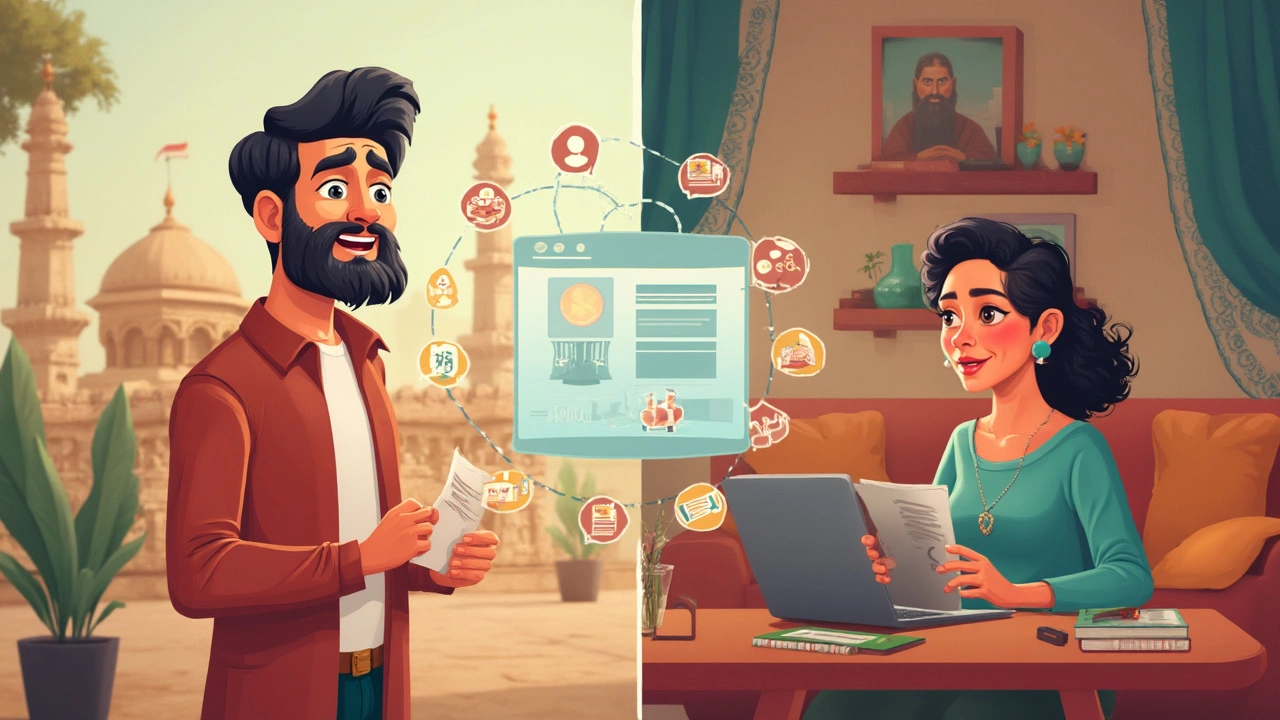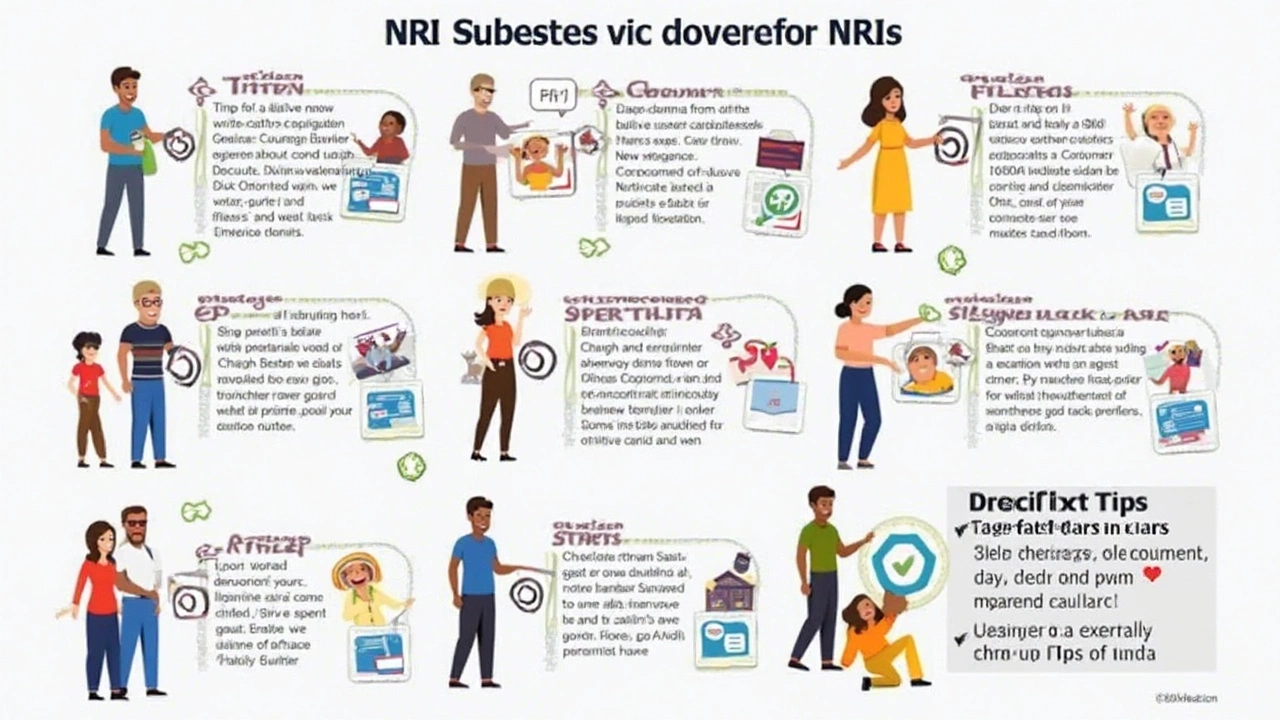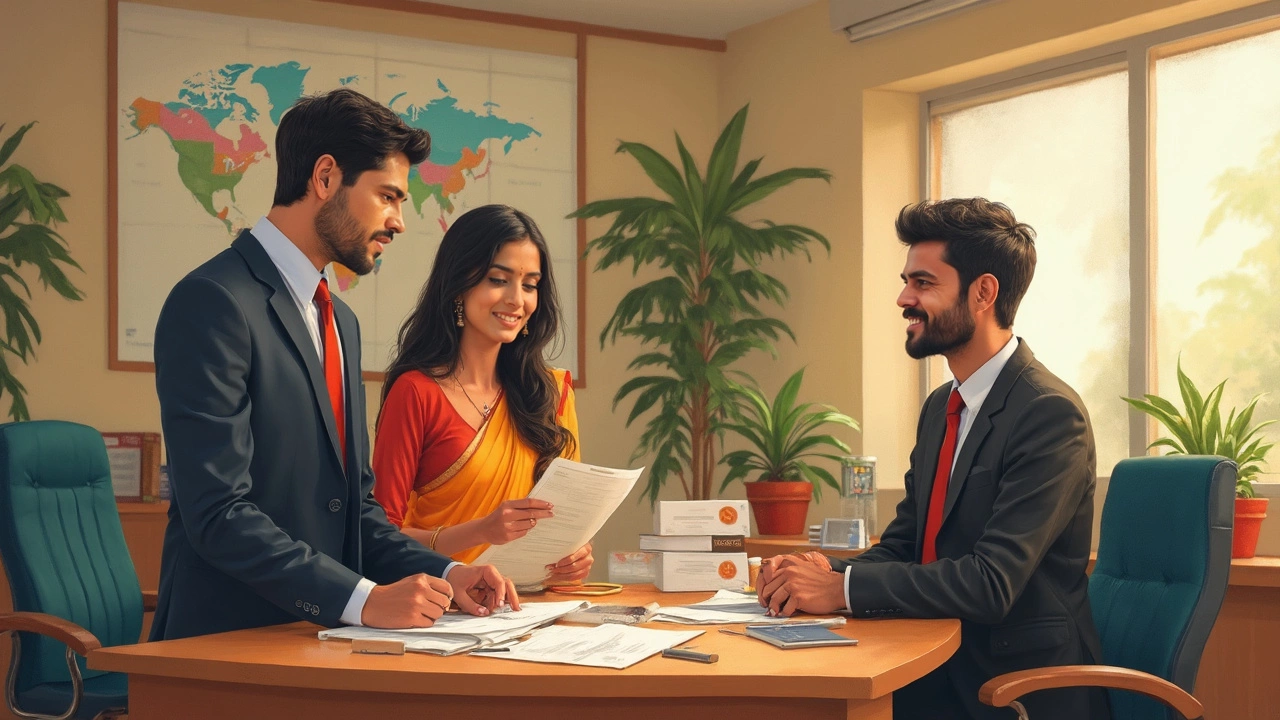Trying to figure out marriage registration in India as an NRI? It's a mix of paperwork, old-school rules, and a few digital upgrades. Before you start booking flights or setting up appointments, know this: you don’t need to be an Indian citizen living in India to make your marriage official here. Even if you’re working or living abroad, you can get it done—thanks mostly to the Special Marriage Act, 1954.
This act is a lifesaver for NRIs because it doesn’t care about your religion or where in the world you’re living. Both partners don’t even need to be Indian citizens. What really matters is at least one person is legally connected to an Indian address, or the marriage takes place in India. This isn’t just a rubber-stamping exercise. You’ll need the right papers—think passports, proof of address, visa status, and a few extra photos. If one of you lives outside India, your process might take a few weeks longer, but planning ahead makes it easier.
- Eligibility and Laws for NRI Marriage Registration
- Essential Documents You’ll Need
- How the Registration Process Works
- Tips to Handle Common Roadblocks
- Taking It Online: E-Registration and Remote Options
Eligibility and Laws for NRI Marriage Registration
If you’re an NRI trying to figure out how marriage registration actually works in India, here’s what you need to know: the whole thing is mainly governed by the Special Marriage Act, 1954. This law covers pretty much everyone—Hindus, Muslims, Christians, NRIs, foreign nationals—making it the top choice for anyone with cross-country ties. Under this act, your marriage can happen in India no matter your religion or nationality, as long as you meet a few age and paperwork requirements.
You or your partner need to have lived in the area where you’re registering the marriage for at least 30 days before applying. The minimum age is 21 for guys and 18 for gals. Both partners must be single (unmarried, divorced, or widowed) and not closely related under Indian law. If one or both of you are foreign citizens, you can still apply, but you’ll need extra documents showing your current marital status from the country you live in.
- At least one person must have an Indian address (even if it’s a relative’s place) or proof of residence in that district for at least 30 days.
- Banned relationships (like siblings or first cousins) are a no-go, so double-check you’re legally allowed to marry each other in India.
- If you got married abroad and want it recorded in India, there’s a different process and extra paperwork—but it’s possible.
For Hindus, Sikhs, Buddhists, and Jains, the Hindu Marriage Act, 1955 could be easier if both partners are from these groups. But honestly, NRI marriage registration usually goes faster under the Special Marriage Act since it’s designed for international situations. Here’s a helpful breakdown comparing the two paths:
| Criteria | Special Marriage Act | Hindu Marriage Act |
|---|---|---|
| Religion flexibility | Any religion | Only for Hindus, Sikhs, Buddhists, Jains |
| NRI compatible | Yes | Only if both are Hindu/Sikh/Buddhist/Jain |
| Age requirements | 21 (M), 18 (F) | 21 (M), 18 (F) |
| Notice period | 30 days public notice | Not needed |
If you’re serious about Indian marriage laws for NRIs, stick to the Special Marriage Act. Just remember: a 30-day waiting period is non-negotiable, so mark your calendar. This applies even if you’re only in India for a quick trip. Start the paperwork right, and you won’t be running around at the last minute.
Essential Documents You’ll Need
This is the part nobody can skip if they want a NRI marriage registration to go smoothly. The Indian authorities are strict about paperwork. Mess this up, and you’ll face long delays or flat-out rejection—no matter how genuine your case is. Here’s the list NRI couples need to tick off before even stepping into the marriage registrar's office.
- Passports (original + copy): Both partners must present valid passports. For NRIs, this is usually the most important ID proof.
- Proof of address: Anything official works here: Aadhar card, electricity bill, rent agreement, or overseas address proof notarized/apostilled if you live outside India.
- Visa status: If you or your would-be is living abroad, attach a copy of your visa or residence permit. Even expired visas with exit stamps get accepted sometimes, but play it safe with a current document.
- Birth certificates: Not mandatory everywhere but helps avoid confusion over age (minimum legal age: 18 for brides, 21 for grooms).
- Photographs: You’ll need about 4-6 recent passport size color photos of both partners.
- Single status declaration: An affidavit stating you’re both single and eligible to marry—get this notarized if one of you is abroad.
- Marriage invitation or proof of marriage ceremony: Some registrars want this as evidence if the marriage has already happened traditionally.
For Indian marriage laws, it helps to check if your local registry wants two witnesses present—anyone with an Indian address proof usually works. Witnesses need their ID proof and passport-size photos too.
| Document | Who Needs It | Common Hiccups |
|---|---|---|
| Passport (with visa page) | NRI partner(s) | Expired copy, missing visa page |
| Proof of address | Both | Outdated bill, foreign address without apostille |
| Single status affidavit | Both | Not notarized, missing details |
| Witness ID & photos | 2 witnesses | Witness unavailable last minute |
If any documents are in a language outside Hindi or English, get them translated and notarized. Electronic copies help for online applications, but always carry originals on the big day. Double-check the registrar’s website—sometimes there are district-specific demands.

How the Registration Process Works
The way NRI marriage registration works in India isn’t rocket science, but you’ll want to get each step right. Most NRIs use the Special Marriage Act, 1954, because it’s designed to handle cross-country paperwork. Whether you live in Dubai or Chicago, the basics don’t change—you just need to follow the right process at an Indian marriage registrar’s office. Here’s how it usually goes:
- Notice of Intended Marriage: You both (or at least one of you with valid address proof in India) need to file a written “notice” at the local marriage registrar where either partner has lived for at least 30 days. This kicks off the legal process.
- Waiting Period: After the notice is posted, there’s a mandatory 30-day waiting period. This is basically the government’s way of saying, “Any objections? Speak now.” The notice is put up on the office’s board for everyone to see. No, you can’t skip this.
- Document Submission: While waiting, you’ll have to hand over all required documents. This usually includes passports, address proof, birth certificates, four passport-size photos each, and if you were previously married, proof of divorce or spouse’s death certificate.
- Personal Appearance: Both partners and three adult witnesses must be present on the day of the marriage. A lot of folks think they can get away with just a video call, but most registrars want you there in the flesh.
- Registration and Certificate: If there are no objections and your paperwork checks out, the marriage officer completes the registration. You get your official marriage certificate on the spot or within a few days.
To give you a clearer idea of timelines and what’s needed, here’s a quick reference:
| Step | How Long It Takes | Need to Be in India? |
|---|---|---|
| Submit Notice | 1 day | At least one partner |
| Waiting Period | 30 days | No, but easy if you stay |
| Paperwork Check | Varies (1-2 weeks) | No, but helps speed up |
| Registration Day | Few hours | Both partners + 3 witnesses |
| Get Certificate | Same day or 1-2 days after | Anyone can collect |
Keep in mind: Even if you or your partner can’t be in India for every step, at least one of you has to handle most of the legwork on the ground. Don’t let the 30-day wait surprise you—plan your travel around it if needed. Double-check all documents, because something as simple as a typo on a passport can stall the whole marriage registration process.
Tips to Handle Common Roadblocks
No matter how organized you are, you'll probably hit a few bumps during your NRI marriage registration in India. Some issues pop up over and over, so it helps to be prepared.
Name mismatches in documents are classic. Your passport spells your name one way, your partner’s certificate has an extra letter, and that’s enough for the registrar to pause everything. Double-check all your docs before making an appointment. If something’s off, get it fixed ahead of time. The last thing you want is for your application to be put on hold for weeks for a simple typo.
Next, the proof of residence trip-up. Registrars often want utility bills, rent agreements with your name, or a letter from your resident association. If you’re abroad, this one can be tough. Many NRIs ask their family back home to mail them recent bills or official letters. Sometimes, a notarized affidavit from the Indian Embassy works, but always ask your local registrar office for what they actually accept. Requirements can shift from state to state!
If your spouse can’t attend in person for every visit, ask about the power-of-attorney (PoA) route. It’s not always publicized, but some districts do allow a close family member to stand in, if you have a notarized PoA. Before you try this, call your registrar to double-check—it’s not a universal option, but it saves time if available.
"State authorities sometimes interpret the Special Marriage Act differently, so ask your district marriage registrar directly about documentation, timelines, and online options," says advocate S. Kaul, who handles cross-border marriage cases in Mumbai.
Expect delays—not because you miss a document, but simply due to backlog. For bigger city offices, you might wait 30–45 days just for document verification. Here’s a real-world stat: as of early 2024, Mumbai registrars reported a 27% increase in processing times for Indian marriage laws involving NRIs, mainly due to higher demand and manual checks.
| Common Issue | Quick Tip |
|---|---|
| Document mismatch | Rectify errors at your embassy or local offices before flying in |
| Missing address proof | Use Indian Embassy notarization if needed, but confirm with registrar first |
| Spouse abroad | Ask about Power-of-Attorney participation |
| Unexpected fees | Always carry extra passport photos and both cash/card |
Rules can be old-school, and clerks might toss in some extra requirements. Always bring extra ID copies, plenty of passport photos, and be ready for questions about your visa if you’re not on an Indian one. Save every receipt, including application acknowledgements—you may need proof if someone down the line asks for it.

Taking It Online: E-Registration and Remote Options
So, what if you're not in India but still want to lock things down legally? Good news—Indian states have started rolling out NRI marriage registration options online. While the central government doesn’t have a single national portal for all marriages, several state governments, like Delhi, Maharashtra, and Karnataka, now let you kick-start the process without setting foot inside a government office.
Here’s how the digital process usually works:
- Visit the official marriage registration portal of the state where the marriage is to be registered. For example, in Delhi, that's the e-District portal. For Maharashtra, it’s the Government Receipt Accounting System (GRAS).
- Create an account with your email and phone number.
- Fill out the marriage registration application, upload scanned copies of all required Indian marriage laws documents—like passports, visa pages, proof of residence, and photos.
- Pick a date for the in-person verification and final signature, which is still required for most states. You can usually select a slot a few weeks in advance.
- Pay the registration fees online. These can vary (Delhi charges ₹100 for the application and ₹150 for the certificate, for example), so double-check your state’s rates.
Not all paperwork is digital, though. The couple and witnesses often need to show up for a quick appointment at the sub-registrar office. But these online steps mean you won't spend hours queuing up just to submit forms or book slots. In cities like Mumbai, most folks get their slot within two to four weeks after online submission—faster if you avoid peak wedding season.
The really good news for NRIs is that many states now accept scanned documents—self-attested and notarized if you’re outside India. Some embassies even offer help with notarizing for Indian NRI marriage registration paperwork. And, if one partner truly can't make it, certain states allow representation via power of attorney, though this needs to be planned out ahead of time and correctly notarized.
Here's a sample of how major states stack up with online applications:
| State | Portal | Online Steps | In-person Visit Needed? |
|---|---|---|---|
| Delhi | e-District | Application + upload docs | Yes, for final verification |
| Maharashtra | GRAS | Application + upload docs + fee payment | Yes |
| Karnataka | Kaveri Online Services | Application + booking slot | Yes, with docs |
Here's a quick tip—scan and save all your original documents in high quality before uploading, because blurry or incomplete files are the #1 reason online applications get bounced back. Double-check state-specific rules before starting your marriage process India journey online, since some states ask for slightly different proofs or have extra witness requirements if you're not physically there.
